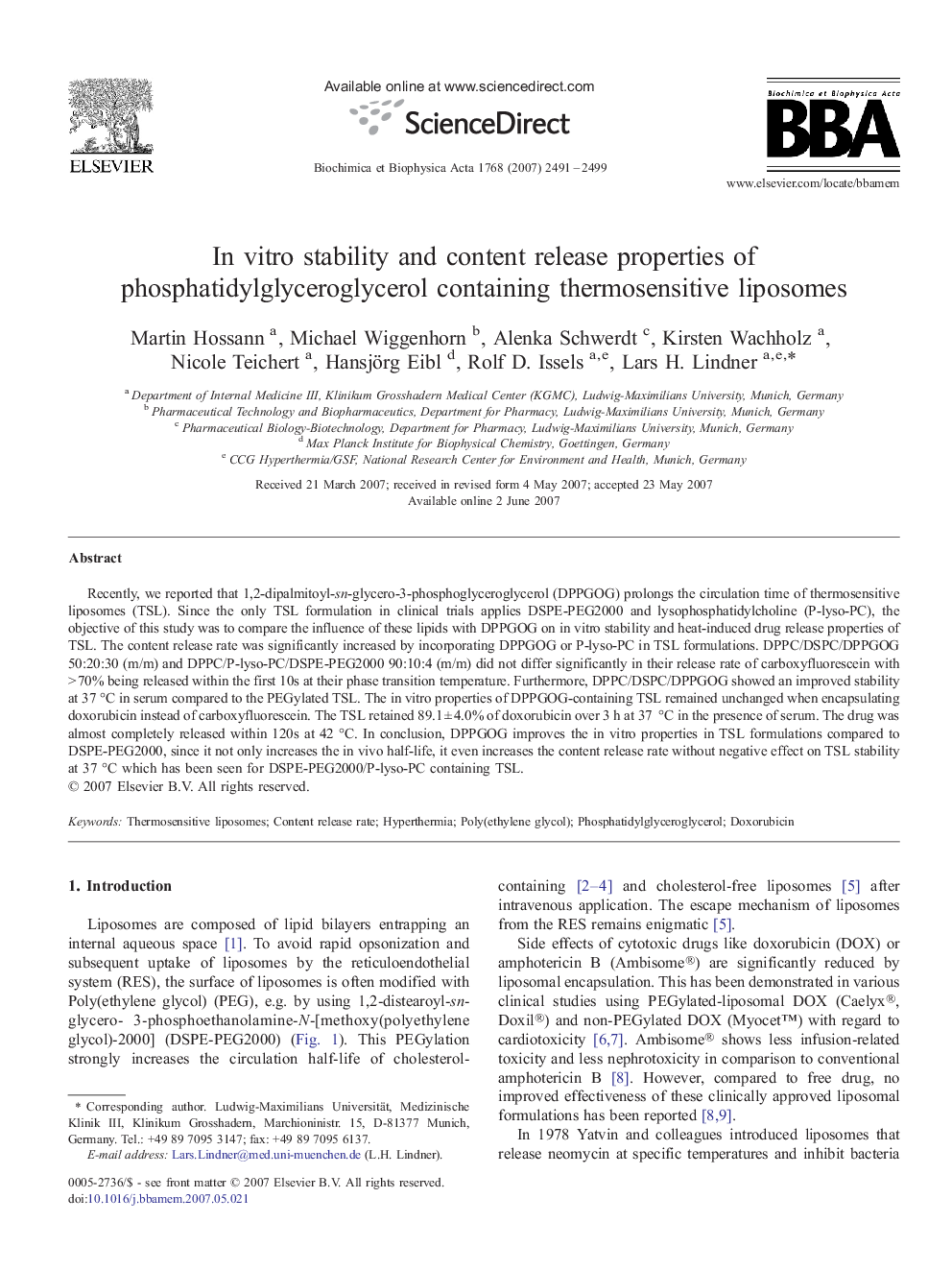| Article ID | Journal | Published Year | Pages | File Type |
|---|---|---|---|---|
| 1945671 | Biochimica et Biophysica Acta (BBA) - Biomembranes | 2007 | 9 Pages |
Recently, we reported that 1,2-dipalmitoyl-sn-glycero-3-phosphoglyceroglycerol (DPPGOG) prolongs the circulation time of thermosensitive liposomes (TSL). Since the only TSL formulation in clinical trials applies DSPE-PEG2000 and lysophosphatidylcholine (P-lyso-PC), the objective of this study was to compare the influence of these lipids with DPPGOG on in vitro stability and heat-induced drug release properties of TSL. The content release rate was significantly increased by incorporating DPPGOG or P-lyso-PC in TSL formulations. DPPC/DSPC/DPPGOG 50:20:30 (m/m) and DPPC/P-lyso-PC/DSPE-PEG2000 90:10:4 (m/m) did not differ significantly in their release rate of carboxyfluorescein with > 70% being released within the first 10s at their phase transition temperature. Furthermore, DPPC/DSPC/DPPGOG showed an improved stability at 37 °C in serum compared to the PEGylated TSL. The in vitro properties of DPPGOG-containing TSL remained unchanged when encapsulating doxorubicin instead of carboxyfluorescein. The TSL retained 89.1 ± 4.0% of doxorubicin over 3 h at 37 °C in the presence of serum. The drug was almost completely released within 120s at 42 °C. In conclusion, DPPGOG improves the in vitro properties in TSL formulations compared to DSPE-PEG2000, since it not only increases the in vivo half-life, it even increases the content release rate without negative effect on TSL stability at 37 °C which has been seen for DSPE-PEG2000/P-lyso-PC containing TSL.
